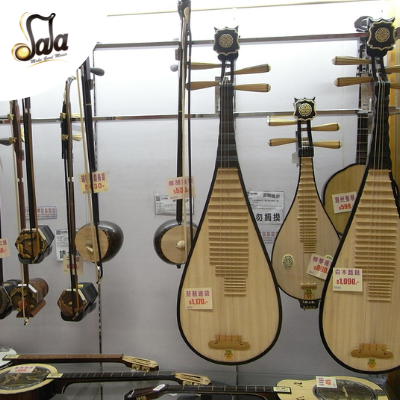Main Turkish Bowed Instruments
Every culture has its own distinct tone and beat. The noises and traces left by two continents and countless civilizations have been passed down through the generations in this country in a wide diversity. In art and music, Turkey is one of the places where this diversity is most visible.
The development or even invention of dozens of different instruments for diverse genres has resulted from the advent of many styles of music. When you visit Turkey, you will have the opportunity to hear hundreds of various sounds and tones. Prepare to be introduced to traditional Turkish musical instruments.
About Turkish Bowed Instruments

Turkey has a long musical legacy with many different and frequently opposing styles. Turkey is at the crossroads of East, West, Mediterranean, Middle Eastern, and Islamic cultures. Anatolia's cultural diversity is so rich that even in locations that are physically adjacent to each other, significant cultural distinctions can be seen. This vibrant image also applies to Turkey's music.
Turkey has a lengthy tradition of traditional music, which is beloved by many in the Middle East. Because of the richness of Turkey's rich musical tradition, the country is home to a wide range of distinct instruments.
What Are The Turkish Bowed Instruments

Turkish bow instruments are kabak kemane, kemence, kanun, and santur.
The Kabak violine is a traditional instrument that has maintained its original look from the past to the present. The Kabak violine is the unique example of Turkish Folk Music's stringed, strung, and leather-covered instruments. Its origins can be traced back to Central Asia. It's a two- or three-stringed folk instrument with a leather body. It varies depending on the region and form.
Kemençe is the name given to two separate string instruments, one of which is employed in Ottoman music and the other in Black Sea folk music. The titles "armudî kemençe" and "fasil kemençe," which were used for the first of these until the middle of the twentieth century, appear to have given way to the appellation "classical kemençe." The "Black Sea kemençe," a traditional instrument, is the second. The "traditional kemençe" is a tiny instrument with a length of 40-41 cm and a width of 14-15 cm. Carving from a single piece of wood creates the half-pear-like body, the elliptical 'head,' and the 'neck' of the stem.
The kanun instrument has a long history dating back to BC. It was built in the nineteenth century. The oldest known law was discovered in Nimrud, an Assyrian metropolis. The qanun is a fretless guitar with 24 to 27 frets. In each pitch, three strings reverberate the sound. Its construction is comparable to that of a harpsichord's sound system. Its strings are nylon strings developed specifically for musical instruments. Stringers made of intestines were utilized instead of nylon wire in the beginning.
Santur is regarded as a traditional saz kind. It's one of the lesser-known string instruments. Small mallets or hammers are used to play it. It can be described as a musical instrument that can be played solo or in combination with other instruments. Santur is also recognized for its legal similarities.





Leave a comment